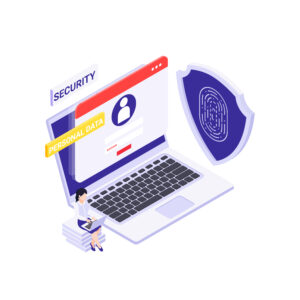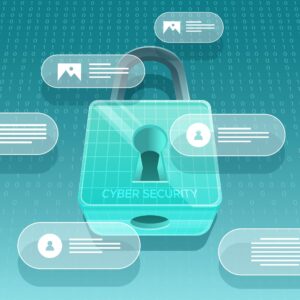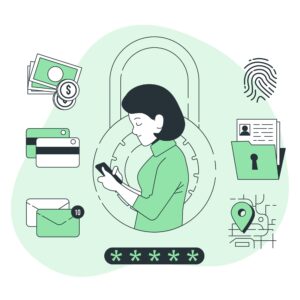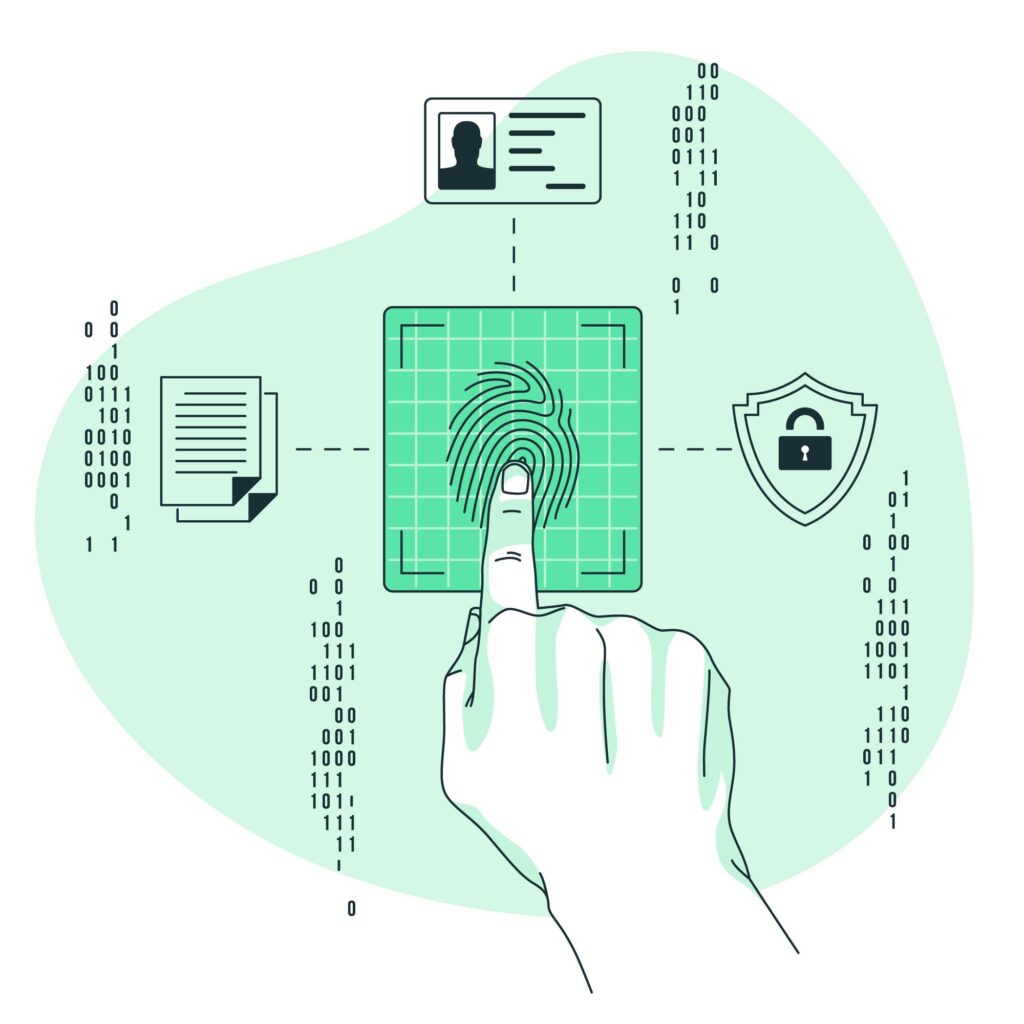What is multi factor authentication and how does it work?
In today’s digital age, securing your online presence has become more important than ever. With an increasing number of cyber threats, it is crucial to take additional measures to protect sensitive data. Understanding one such measure is Multi-Factor Authentication or MFA. In this blog, we will unravel the concept of MFA and explore its various aspects. We will discuss the registration process, authentication steps, and types of MFA methods available. We will also delve into the pros and cons of using MFA and differentiate it from Two-Factor Authentication (2FA). Additionally, we will unpack the concept of Adaptive Multi-Factor Authentication (AMFA) and address common challenges in implementing MFA. Join us as we explore if MFA is the ultimate solution to cyber threats.
Unraveling the Concept of Multi-Factor Authentication (MFA)
Safeguarding user data with layers of security, MFA provides extra protection beyond username and password. It authenticates users through multiple pieces of evidence, ensuring secure access by requiring additional verification steps and validating the user’s identity through different methods. This enhances security and mitigates risks associated with unauthorized access.
The Need for MFA in Today’s Digital Landscape
In today’s digital landscape, safeguarding sensitive information from unauthorized access is paramount. Multi-factor authentication (MFA) plays a crucial role in combating cybersecurity threats and protecting user accounts. By adding an extra layer of authentication, MFA ensures secure system access, making it essential for secure websites and official government organizations. Implementing MFA effectively thwarts potential intrusions, upholding data integrity and user privacy.
Examples of MFA in Everyday Life
From mobile device authentication to online banking, multi factor authentication (MFA) is widely used in everyday life. Official and government websites also require MFA for secure access, while businesses use it to protect sensitive information. Particularly in the United States, MFA plays a crucial role in safeguarding user data against potential threats. Incorporating multiple verification steps, MFA ensures enhanced security in various aspects of daily life.
Understanding How Multi-Factor Authentication Works

The MFA registration process necessitates linking a second form of authentication, while the authentication steps typically involve proving possession, knowledge, or inherence. MFA methods adapt to user experience for subsequent login attempts, and reactions may vary based on business rules. Additionally, MFA access management typically involves second factor authentication verification.
The Registration Process
During the registration process for multi-factor authentication (MFA), authenticator apps like Microsoft Authenticator are commonly utilized. These apps employ secure algorithms to generate authentication codes for MFA, typically requiring the setup of software tokens for authentication. Users can register new devices for MFA by scanning a QR code with an authentication app, often involving possession factor authentication.
The Authentication Steps
MFA authentication methods encompass security key, fingerprint, or token verification. MFA adaptive authentication adjusts to user’s identity and behavior for secure access. Typically involving a second form of authentication, MFA verification includes biometrics, smartphone, or possession factor authentication. Authentication apps generate one-time passcode (OTP) for MFA authentication.
Reactions and Possible Challenges
When users attempt multi-factor authentication (MFA) logins, it may trigger adaptive authentication, enhancing security through behavioral analysis. Challenges with MFA authentication may include user experience and app compatibility. Adaptive authentication in MFA considers user behavior and access control, following business rules and policies for multifactor verification. MFA login may involve security key and IAM solutions to bolster system access control.
Delving into the Types of Multi-Factor Authentication Methods
Knowledge-based authentication is a prevalent MFA verification method, while possession-based methods use secure credentials for access. MFA often involves multifactor verification for secure system access, including a second form of authentication like a password or token. Types of MFA include possession factor, knowledge factor, and inherence factor.
Knowledge-Based Authentication
Utilizing personalized information, knowledge-based authentication is a crucial aspect within MFA verification. Security questions and personalized data validate user identity, adding an extra layer of security to access control. This method enhances system security against unauthorized access attempts, bolstering overall security measures. MFA login authentication often incorporates this knowledge factor verification for secure access control.
Possession-Based Authentication
Possession-based authentication methods enhance system access control security with a second factor, often involving authentication app credentials. Utilizing possession factor verification for MFA login attempts secures user identity and is essential for secure MFA verification. This method plays a crucial role in MFA, ensuring that only authorized users can gain access to sensitive information or systems.
Inherence-Based Authentication
Inherence-based authentication leverages biometric data like fingerprint, facial, or voice recognition for verification, relying on the possession factor for user validation. This method provides a high level of security and is convenient and user-friendly. By utilizing biometric authentication, the system enhances access control security, making it resistant to unauthorized access attempts.
Exploring the Pros and Cons of Using MFA

MFA offers added security beyond passwords, enhancing protection against unauthorized access and reducing chances of data breaches. However, it can be perceived as time-consuming, potentially affecting user experience. Despite the drawbacks, MFA prevents unauthorized access, ensuring data security. Balancing the benefits and drawbacks is crucial for effective MFA implementation.
Highlighting the Advantages of MFA
MFA verification methods ensure secure access management and reduce the likelihood of data breach through identity verification. Additionally, MFA enhances user experience by securing access to mobile devices and offers secure website access. Furthermore, MFA authentication methods provide adaptive authentication capabilities, enhancing overall security measures.
Discussing the Potential Drawbacks of MFA
MFA verification processes can lead to login delays. New device setup may pose challenges for users. Without proper implementation, MFA is vulnerable to phishing attacks. Some find MFA methods cumbersome, impacting user experience. Small businesses may face challenges in effective MFA implementation. These drawbacks highlight the need for continuous improvement in MFA systems.
Difference Between Multi-Factor Authentication and Two-Factor Authentication
MFA, in comparison to 2FA, demands at least two verification factors. Conversely, 2FA necessitates only two authentication factors. While both aim to bolster user identity verification, MFA provides a higher security level and a more robust defense against unauthorized access attempts. This offers an elevated level of protection against potential cyber threats and access breaches.
Basic Principles of Two-Factor Authentication
Two-factor authentication combines distinct verification methods, typically something the user knows and something they possess. It involves a password and a time-based token code, requiring two pieces of evidence for verification. Common verification methods include SMS and email codes. This additional layer of security enhances protection against unauthorized access attempts.
Key Differences and Similarities between MFA and 2FA
MFA and 2FA differ in the number of authentication methods required. While MFA mandates verification from at least two methods, 2FA only needs two. Both aim to securely establish a user’s identity, but MFA offers higher security due to additional factors. 2FA methods are commonly used for online transactions, providing a basic yet effective form of authentication.
Unpacking the Concept of Adaptive Multi-Factor Authentication
Adaptive Multi-Factor Authentication (MFA) dynamically adjusts security measures based on user behavior, utilizing risk-based algorithms for verification. By applying security rules to user access and preventing unauthorized attempts, it enhances security by identifying and authenticating users. This adaptive approach is crucial in addressing the evolving tactics of hackers and ensuring secure access control without causing unnecessary friction for legitimate users.
How Adaptive MFA Enhances Security
Enhancing security through adaptive MFA involves evaluating user data, device, and location for authentication. Anomalies in user access patterns trigger additional verification, mitigating security risks associated with user identity management. This form of MFA adapts security rules based on user access behavior, offering real-time user verification and enhancing system access control.
Use Cases of Adaptive MFA in Different Industries
Adaptive MFA is extensively utilized in the banking and financial sector, ensuring secure access to sensitive data. In healthcare organizations, it plays a vital role in securing access to confidential information. Government agencies leverage Adaptive MFA for secure data access, while e-commerce platforms rely on it for identity verification. The adaptive nature of MFA is crucial for managing secure access across different industries.
Addressing the Common Challenges of Implementing MFA
Multi-factor authentication not only secures sensitive information but also deters unauthorized access attempts, thereby bolstering overall security. Its implementation aids in compliance with data protection regulations, while simultaneously enhancing the user experience by providing seamless system access. Additionally, MFA reinforces identity verification, diminishing the risk of unauthorized access, thus offering a multifaceted approach to security enhancement.
Overcoming User Resistance and Usability Issues

Incorporating adaptive authentication, MFA accommodates user preferences and supports secure login on mobile phones. It reduces resistance by offering user-friendly authentication methods, aligning with business rules. MFA enhances security without compromising user experience, ensuring convenience while protecting against hackers. Implementation can be tailored for seamless conjunction with access management systems.
Managing Costs and Technological Hurdles
Implementing MFA for small businesses supports cost-effective security measures. The seamless integration of MFA solutions reduces technological barriers. MFA ensures secure access control, minimizing the risk of unauthorized users and reducing cybersecurity risks. Verification methods of MFA ensure secure website access and authentication, enhancing system access security.
Is Multi-Factor Authentication the Ultimate Solution to Cyber Threats?

Can multi-factor authentication (MFA) truly be considered the ultimate solution to cyber threats? MFA acts as a robust defense against password breaches and cyber threats, enhancing security and reducing the risk of data breaches. By implementing MFA, organizations establish secure user identity verification, minimizing vulnerabilities and safeguarding against unauthorized access. Strengthening security protocols with MFA can mitigate the risk of data breaches.
Conclusion
In conclusion, multi-factor authentication (MFA) is a crucial security measure in today’s digital landscape. By combining multiple authentication factors such as knowledge-based, possession-based, and inherence-based, MFA provides an extra layer of protection against cyber threats. It enhances security by reducing the risk of unauthorized access and identity theft.
While MFA offers numerous advantages, such as increased security and mitigating the impact of password breaches, it also has its challenges. Overcoming user resistance and usability issues, as well as managing costs and technological hurdles, are common challenges when implementing MFA.
It’s important to note that MFA differs from two-factor authentication (2FA) in terms of the number of authentication factors required. While 2FA uses two factors, MFA uses more than two, making it a more robust security measure.
Adaptive MFA takes security a step further by dynamically adjusting authentication requirements based on user behavior and risk factors. This enhances security and provides customized protection for different industries and use cases.
In conclusion, while MFA is not a foolproof solution, it significantly strengthens security and helps protect against cyber threats. Implementing MFA should be a priority for organizations looking to safeguard sensitive information and ensure the integrity of their systems.
https://doi.org/10.6028/NIST.SP.1800-17
https://api.semanticscholar.org/CorpusID:231791299


